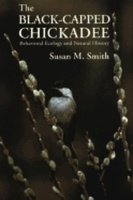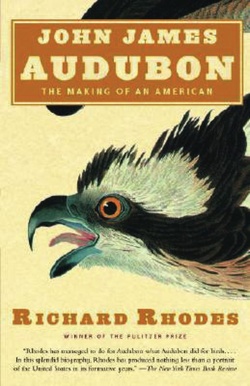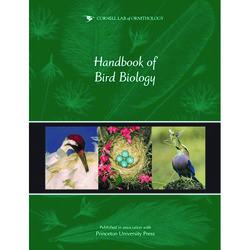A reader of this column, Tim McCormack, asked me to suggest a list of bird books to provide a good overview of the field of ornithology.
After sending him some suggestions, it occurred to me that other readers might be interested in them as well.
The number of bird books is huge, so I’ve chosen an eclectic assortment.
The best college-level textbook on the market is Frank Gill’s “Ornithology.” The current edition was published in 2007 so is quite up to date. Gill’s text is highly readable; it is chock-full of information without being technical. The book has many figures and photographs to accompany the text.
The “Handbook of Bird Biology” is a massive reference volume created by the Cornell Laboratory of Ornithology. The book serves as the text for the Cornell Lab’s long-standing home study course in biology. It can be purchased without subscribing to the course.
The level of the text is similar to Gill’s “Ornithology.” The handbook is a cooperative effort, with each of the 10 chapters being written by one or more ornithologists who are specialists in a particular topic.
The beauty of bird song captivates birder and non-birder alike and there is an embarrassment of riches on this topic. A good starting point is Don Kroodsma’s “The Singing Life of Birds.” Kroodsma is a prolific researcher on bird vocalizations, authoring many technical articles on the subject. This book, however, is aimed at a lay audience. Kroodsma explains how our eyes can help our ears by describing sonograms, computer-generated graphs of sounds.
The text is a collection of narratives of many different excursions that Kroodsma took to record vocalizations. You will go with him close to his home in Massachusetts to record a hermit thrush, to Costa Rica to record wattled bellbirds and to Oregon to record Bewick’s wrens. In each narrative, Kroodsma explains the particular hypothesis he is testing and presents many sonograms on the species of interest. Each narrative is a primer on how to do science.
The book comes with a CD so you can listen to the actual recordings used to generate the sonograms in the text.
Another fascinating book is “Why Birds Sing,” by David Rothenberg. The author is a professor of philosophy and a talented jazz clarinetist, and his book explores the interface between bird song and the arts. By interviewing scientists and composers, he explores the meaning of bird song, both to avian and human ears, to try to determine why birds sing. I enjoy books that meld different disciplines to construct intriguing connections. This book succeeds in this regard.
Lots of mammals and insects migrate, but none can hold a candle to birds in the extent of their migratory movements. A wonderful introduction to bird migration is Scott Weidensaul’s “Living on the Wind: Across the Hemisphere with Migratory Birds.” Weidensaul is one of our most gifted nature writers. His lyrical prose takes us to many parts of the world to vicariously experience a migratory spectacle.
We see the sandhill cranes in Nebraska, red knots in Delaware, the thousands of songbirds on the Gulf Express, struggling to get to the shores of Gulf Coast states after a nonstop flight from Mexico, and the river of tens of thousands of broad-winged hawks passing over Veracruz, Mexico. By the end of the book, you’ll have experienced fully the phenomenon of bird migration.
I also enjoy books that focus on a single bird species. One of my favorites is Susan M. Smith’s “The Black-Capped Chickadee: Behavioral Ecology and Natural History.” Smith has worked with chickadees for more than four decades. She reviews all aspects of the biology of our state bird in a highly readable style. Much of the research she summarizes is her own.
To get a flavor of field ornithology in the tropics, you will not go wrong by reading Don Stap’s “A Parrot Without a Name.” Stap went on an extended expedition to the Peruvian jungle with a number of ornithologists from Louisiana State University. He takes you to the jungle with all the joy, frustration and anxiety such an experience brings.
Finally, a couple of books on ornithological history. Joseph Kastner’s “A World of Watchers” gives a history of ornithology and birding in North America, mostly focusing on the 19th and 20th centuries. For a fascinating account of the life of John JamesAudubon, you can’t beat Richard Rhodes’ “John James Audubon: The Making of an American.”
I’d love to hear of your favorite bird books.
Herb Wilson teaches ornithology and other biology courses at Colby College. He welcomes reader comments and questions at:
whwilson@colby.edu
Copy the Story LinkSend questions/comments to the editors.





Success. Please wait for the page to reload. If the page does not reload within 5 seconds, please refresh the page.
Enter your email and password to access comments.
Hi, to comment on stories you must . This profile is in addition to your subscription and website login.
Already have a commenting profile? .
Invalid username/password.
Please check your email to confirm and complete your registration.
Only subscribers are eligible to post comments. Please subscribe or login first for digital access. Here’s why.
Use the form below to reset your password. When you've submitted your account email, we will send an email with a reset code.